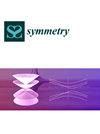Implementation of Finite Element Method Simulation in Control of Additive Manufacturing to Increase Component Strength and Productivity
IF 2.2
3区 综合性期刊
Q2 MULTIDISCIPLINARY SCIENCES
引用次数: 1
Abstract
Additive manufacturing (AM) technologies are becoming a global phenomenon in the manufacturing industry. The progressiveness of additive manufacturing lies in its universality. AM makes it possible to produce parts with complex shapes from different materials without any tools, using only one device. Complex and time-consuming production preparation is eliminated by using AM. It is used in a wide range of industries. Although additive manufacturing is a progressive technology, the currently applied conservative approach has significant limits. The presented work focuses on the development of a new methodology for controlling the AM process. This methodology is based on the outputs of the strength simulation of a specific component through the finite element method (FEM) and their implementation in the printing software of the production equipment. The developed algorithm for controlling the AM process consists of a sequence of successive steps. The designed CAD model of the component is subjected to FEM simulation in order to analyze the von Mises stress in the entire volume of the loaded component. Stresses are distributed asymmetrically in the volume of the component due to the shape and nature of the load. The results of the FEM analysis allow the definition of the volumes in the component with different levels of infill geometry and infill density based on different levels of stress. The FEM simulation also serves to define the effective fiber orientation. The goal of implementing FEM simulation into the building structure of the component is to achieve a symmetrical distribution of stresses in the entire volume. Through the symmetry of internal stresses, it is possible to obtain more efficient production with high productivity and component strength. The work also deals with experimental research on the effect of the building structure on flexural strength. The results of FEM simulation and experimental research are integrated into the developed slicer software to design a layering of the model and the setting of technological and material parameters of printing. This progressive approach makes it possible to generate data for 3D printing based on FEM analysis of components to obtain an optimized printed structure of components and optimized technological and material parameters with regard to maximizing the strength of components and minimizing production times and costs.有限元仿真在增材制造控制中的应用,提高零件强度和生产率
增材制造(AM)技术正在成为制造业的全球现象。增材制造的先进性在于它的通用性。增材制造可以在不使用任何工具的情况下,仅使用一台设备,从不同的材料生产具有复杂形状的零件。使用增材制造消除了复杂和耗时的生产准备。它被广泛应用于各行各业。虽然增材制造是一项进步的技术,但目前应用的保守方法有很大的局限性。提出的工作重点是开发一种控制增材制造过程的新方法。该方法基于通过有限元法(FEM)对特定部件进行强度模拟的输出,并在生产设备的打印软件中实现。所开发的用于控制AM过程的算法由一系列连续步骤组成。对所设计的构件CAD模型进行有限元仿真,分析加载构件整体内的von Mises应力。由于载荷的形状和性质,应力在部件的体积中分布不对称。有限元分析的结果允许根据不同的应力水平来定义具有不同水平充填几何和充填密度的构件的体积。有限元模拟还用于确定光纤的有效取向。在构件的建筑结构中实施有限元模拟的目标是在整个体积中实现应力的对称分布。通过内应力的对称性,可以获得更高效的生产,具有较高的生产率和构件强度。本文还对建筑结构对抗弯强度的影响进行了实验研究。将有限元模拟和实验研究的结果整合到所开发的切片机软件中,设计了模型分层、打印工艺参数和材料参数的设置。这种渐进的方法使得基于部件有限元分析生成3D打印数据成为可能,从而获得优化的部件打印结构和优化的工艺和材料参数,从而最大化部件的强度,最小化生产时间和成本。
本文章由计算机程序翻译,如有差异,请以英文原文为准。
求助全文
约1分钟内获得全文
求助全文
来源期刊

Symmetry-Basel
MULTIDISCIPLINARY SCIENCES-
CiteScore
5.40
自引率
11.10%
发文量
2276
审稿时长
14.88 days
期刊介绍:
Symmetry (ISSN 2073-8994), an international and interdisciplinary scientific journal, publishes reviews, regular research papers and short notes. Our aim is to encourage scientists to publish their experimental and theoretical research in as much detail as possible. There is no restriction on the length of the papers. Full experimental and/or methodical details must be provided, so that results can be reproduced.
 求助内容:
求助内容: 应助结果提醒方式:
应助结果提醒方式:


